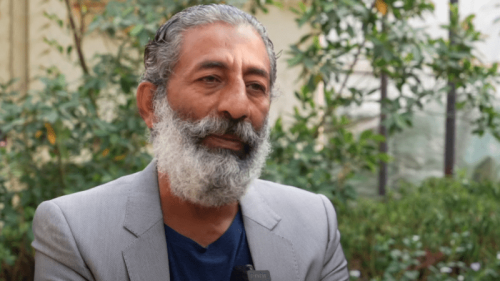
OF all categories of occupations, the most invisible and least talked about work in our country is sanitation or management of human refuse, wastewater, effluents and solid waste. According to a 2015 World Bank estimate, 64 per cent of Pakistan’s population has access to improved sanitation facilities which include pit latrines, composting toilets and flush/pour flush services.
In our urban centres, sewage is conveyed through underground sewer networks to treatment plants (rarely) or directly to the water bodies (mostly). Managing human refuse of some 200 million people requires a significant number of workers even if the available facilities do not serve the entire population. So, who are these people who carry out sanitation tasks at hundreds of tehsil municipal administrations, some municipal corporations and thousands of union councils? Do they have a voice?
These are the workers at the lowest tier of the sanitation services. They maintain, inspect, clean and unclog sewers and, when needed, descend via manholes into fecal sludge, without protection equipment or tools. They do not have a voice. There is no union or federation of sanitation workers — unlike in other countries — to let us hear their collective voice. We only know that the majority of these workers belong to a minority community, discriminated against and shunned by the majority. We come to know of their existence when they suffer fatal accidents in the line of duty, or when they are treated inhumanly in the most unpardonable manner like an injured worker from Umerkot was reportedly treated in hospital.
There is no collective voice for those who clean our sewers.
Cleaning sewers is hazardous as the worker is exposed to biological and chemical agents. There is potential of contact with viruses, bacteria and other microorganisms and thus the risk of hepatitis, leptospirosis and tetanus. Sewers also contain methane, carbon monoxide and hydrogen sulphide which can lead to asphyxiation and death.
An ILO study found that wastewater workers encounter at least “15 accident hazards, three physical hazards, four chemical hazards, three biological hazards, and three ergonomic and psychosocial hazards in the course of their daily duties”. According to a 2016 report, sanitation workers “face a fatality risk that is 10 times higher than workers in all other industries”.
The hazards are to be controlled through appropriate work procedures, administrative controls, engineering and technology, and workers’ education and training. In civilised countries, sanitation workers are provided with liquid-repellent coveralls and gloves, boots, goggles, respirators and splash-proof eye/face shields. They receive vaccination and are trained in the use of tools and educated on the hazards and preventive measures.
Proper sanitation is the building block of any civilised nation. Investment in sanitation yields immense dividends for the nation in terms of improved health status and well-being of the citizens. Pakistan spends a meagre 0.18pc of its GDP on sanitation, says a WHO report of 2015. The first ever, and presumably the last, national sanitation policy of 2006 identified a number of stakeholders, except labour, who play a key role in the implementation of plans. The document mentioned training ‘technicians’ in passing.
The Punjab sanitation policy draft of 2015 has listed the role of 13 stakeholders, including the departments of agriculture, irrigation, education, health, even auqaf. But no role for the labour department is envisaged. Why is labour not mentioned as a stakeholder in sectoral policy documents? Though the generic labour policy document does have a broader regulatory framework for the entire workforce, labour concerns specific to different sectors deserve to be identified in other policy documents. The 2006 policy vowed to develop and use locally appropriate cost-effective technologies.
The draft Sindh sanitation policy of 2014 talks of development and the use of smart, cost-effective technologies. The Punjab policy plans to use remote sensing and GIS technology and recognises the need of product development through innovation and “support to applied research for identifying cost-effective technology options across the sanitation chain”. While the world has moved on to modern sewer tools, we are stuck in a rut with manual inspection. The latest to inspect and maintain the sanitation network is the sewer line rapid assessment tool, a sound-based tool used to identify clogging in a sewer line.
The IT ministry, while striving for its ‘vision of digital Pakistan’ seems to think that just the use of broadband subscriptions to over 30m is about to usher the country into the digital era. This is living in a fool’s paradise. Unless adequate investments are made by the government, and technological solutions promoted to improve basic facilities and the daily lives of the largest number of people — users and workers both — the country will remain stuck in a primitive era regardless of how many of us possess smartphones.
The writer is a researcher in the development sector.
Published in Dawn, June 12th, 2017











































